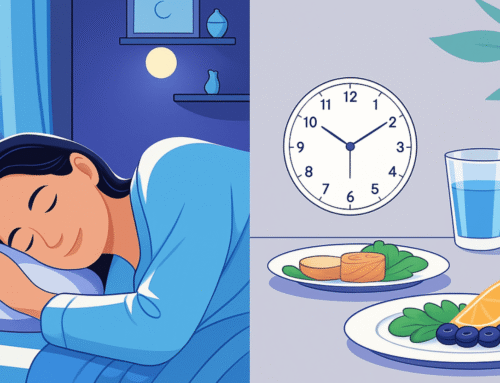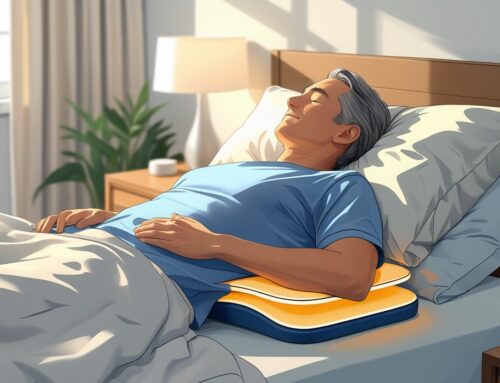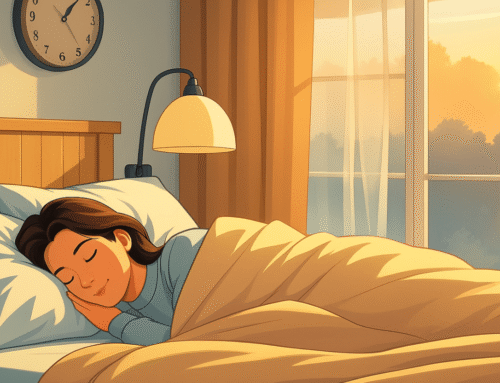Sleeping with vertigo can be tough because even small head movements or lying on a certain side can trigger dizziness. The easiest way to handle it is by keeping your head slightly raised and avoiding the side that causes symptoms. Moving slowly when lying down or getting up also helps reduce sudden dizzy spells at night.
Creating a steady sleep setup is important. Many people find that sleeping on their back with extra pillows feels more comfortable. It also helps to keep the bedroom a place for rest only. Skipping things like reading or watching TV in bed may keep vertigo from getting worse at night.
By making small changes to sleeping positions and habits, people with vertigo can improve their chances of better rest and cut down on nighttime dizziness.
Key Takeaways
- Keeping the head raised can lower the chance of vertigo during sleep.
- Moving slowly and carefully at night reduces dizziness.
- The right sleep position and environment support better rest.
- A good mattress that supports the spine can help create stability and ease vertigo symptoms.
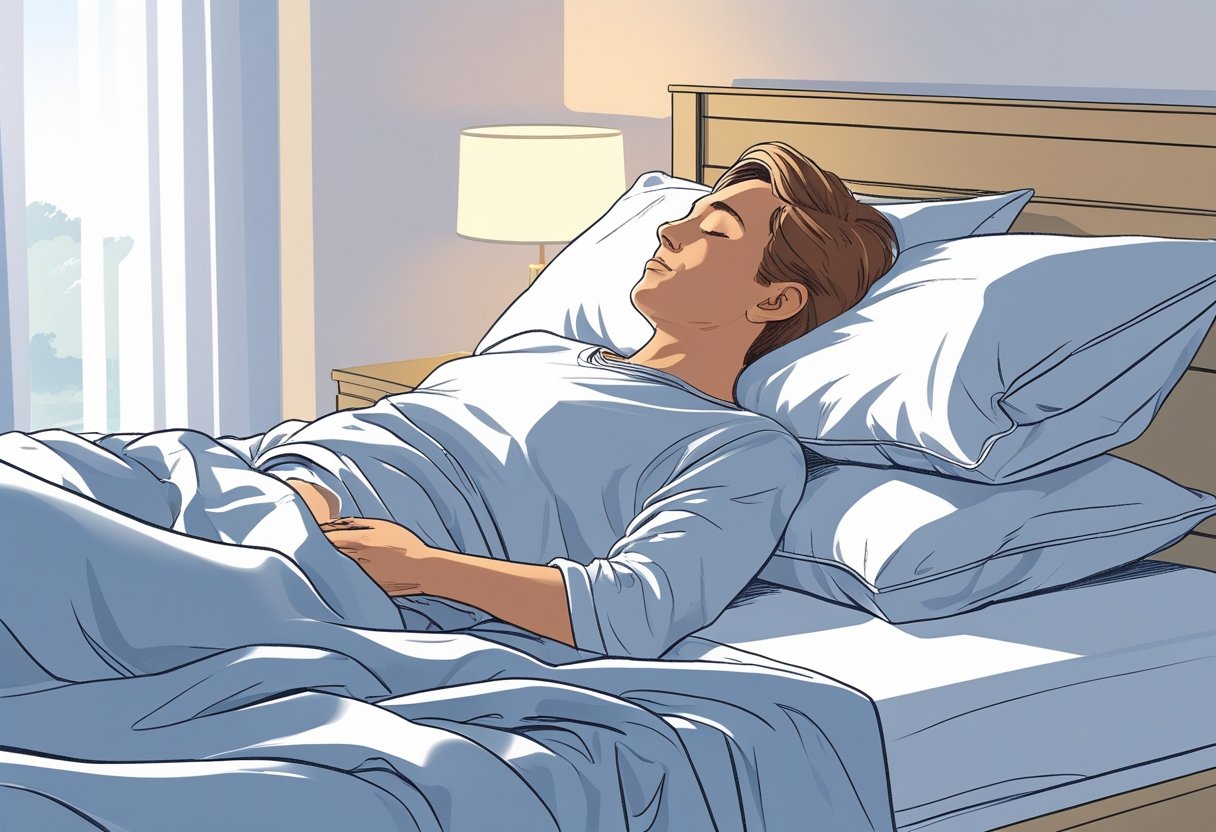
Understanding Vertigo and Nighttime Symptoms
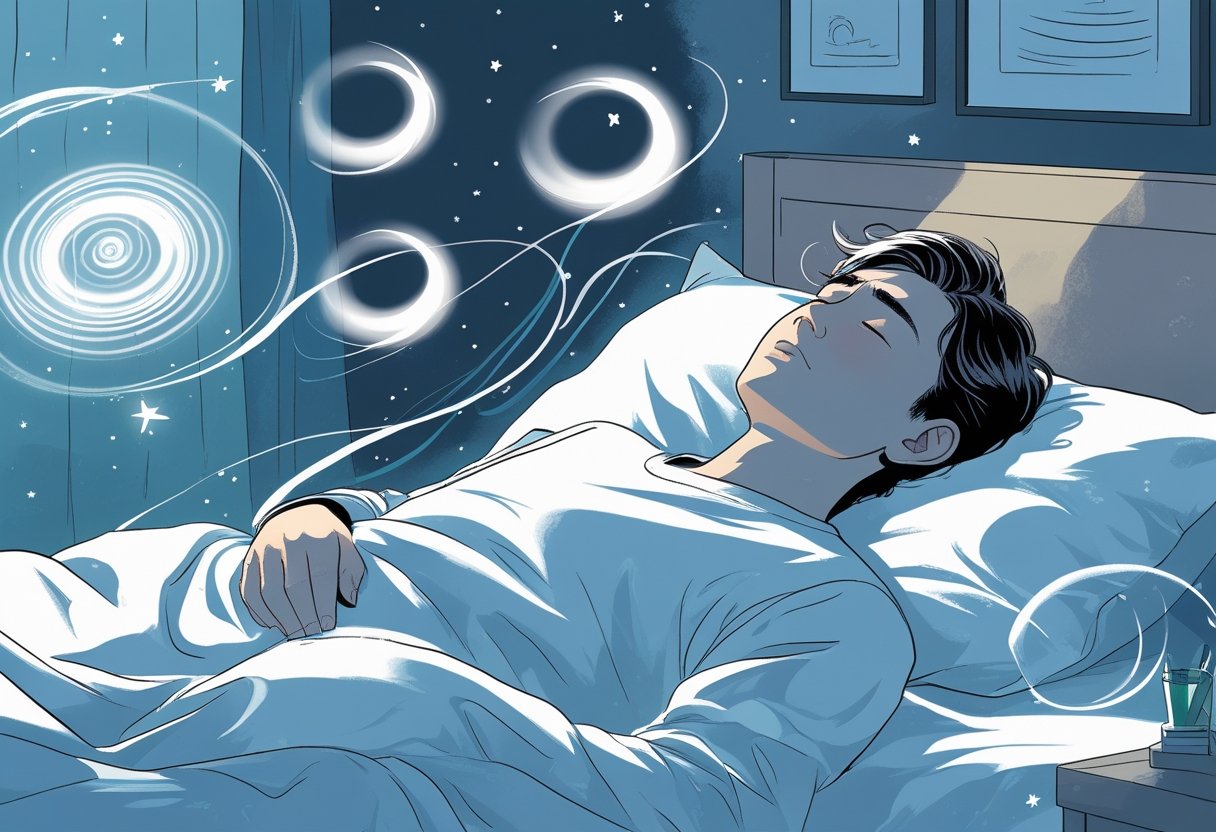
Vertigo feels like spinning or strong dizziness, usually worse when you’re resting or trying to sleep. At night, it can make lying still uncomfortable or cause sudden dizzy spells that wake you up. Understanding what vertigo does to your body and what makes it worse at night can help manage the symptoms better.
What Is Vertigo and How Does It Affect Sleep
The dizziness sensation can also lead to nausea or unbalance, making falls more likely if a person stands up when they are dizzy. Good sleep habits and sleeping position are significant in order to alleviate these symptoms at night.
Vertigo is not the same as lightheadedness. It gives the false sense that you or your surroundings are moving when they’re not. This makes it hard to relax or fall asleep, and many people wake up feeling dizzy. Over time, this can create fear of going to bed and lead to poor-quality sleep. The spinning feeling may also bring nausea or unsteadiness. If you try to stand up while dizzy, it raises the risk of falling. That’s why sleep habits and the way you position your body in bed matter when dealing with vertigo at night.
Types of Vertigo: Peripheral vs. Central
Vertigo usually falls into two main types: peripheral and central.
Peripheral vertigo comes from problems in the inner ear. The most common is benign paroxysmal positional vertigo (BPPV). This happens when tiny crystals in the ear shift and send the wrong signals about head movement. It often shows up with position changes, like rolling over in bed.
Central vertigo is less common and comes from brain or nervous system issues, such as a stroke or multiple sclerosis. This type usually shows up with other problems, like vision changes, balance trouble, or weakness.
Most people with nighttime vertigo deal with the peripheral kind since the inner ear plays a big role in balance, especially when lying down or shifting positions in sleep.
Common Nighttime Vertigo Triggers
Certain things can make vertigo worse at night or cause it while you’re asleep:
- Quick head movements, such as rolling over or tilting the head suddenly
- Sleeping on your back or in positions that disturb inner ear balance
- Dehydration, which affects circulation and balance
- Fatigue or stress, both of which can heighten dizziness
- Medications that list dizziness as a side effect
- Environmental factors, like bright lights or loud sounds that disrupt rest
If you often wake up dizzy, you may benefit from changing sleep positions or avoiding sudden head movements. Staying hydrated and reducing stress during the day can also help cut down dizzy spells at night.
Causes of Vertigo When Lying Down or Sleeping
Vertigo at night usually comes from issues in the inner ear or other health problems. It usually happens because the body’s balance system is thrown off. The way you sleep or the position of your head can make it worse. For some people, even rolling over or lying flat is enough to trigger it.
Benign Paroxysmal Positional Vertigo (BPPV)
BPPV is the most common cause of vertigo when turning in bed. It happens when tiny calcium crystals in the inner ear move out of place. These crystals shift into parts of the ear that control balance, making the brain think the body is spinning or falling when it isn’t.
The dizziness usually comes on suddenly with movements like lying down, rolling over, or tilting the head. It doesn’t last long, often less than a minute, but it can feel intense. People often notice it more when the affected ear is facing down while sleeping. To ease symptoms, many find it helps to keep the head slightly raised and avoid sleeping on the problem side.
Inner Ear Disorders and Other Medical Conditions
Some inner ear conditions, such as Meniere’s disease or vestibular neuritis, can also cause vertigo at night. Vestibular neuritis is inflammation of a nerve that affects balance and usually makes dizziness worse with head movement. Meniere’s disease happens when fluid builds up in the inner ear, leading to episodes of vertigo that can last much longer—sometimes hours. Hearing changes often come with it.
Other possible causes include migraines, strokes, or even side effects from certain medications. These can interfere with sleep and cause dizziness as well. If vertigo comes with serious symptoms, like changes in vision or trouble walking, it’s important to seek medical care right away.
Sleep-Related Vertigo Episodes
Not all vertigo at night comes from ear problems. Sometimes it’s tied to sleep quality or sleep disorders. Poor sleep rhythm, awkward sleeping positions, or quick movements when getting up can trigger spinning sensations or dizziness in people who are prone to it.
Moving slowly when getting in or out of bed can help reduce the attacks. Keeping the head lifted and avoiding bright lights or reading while lying down may also lessen nighttime dizziness. Making small changes to sleep habits and being aware of triggers can go a long way in controlling vertigo episodes at night.
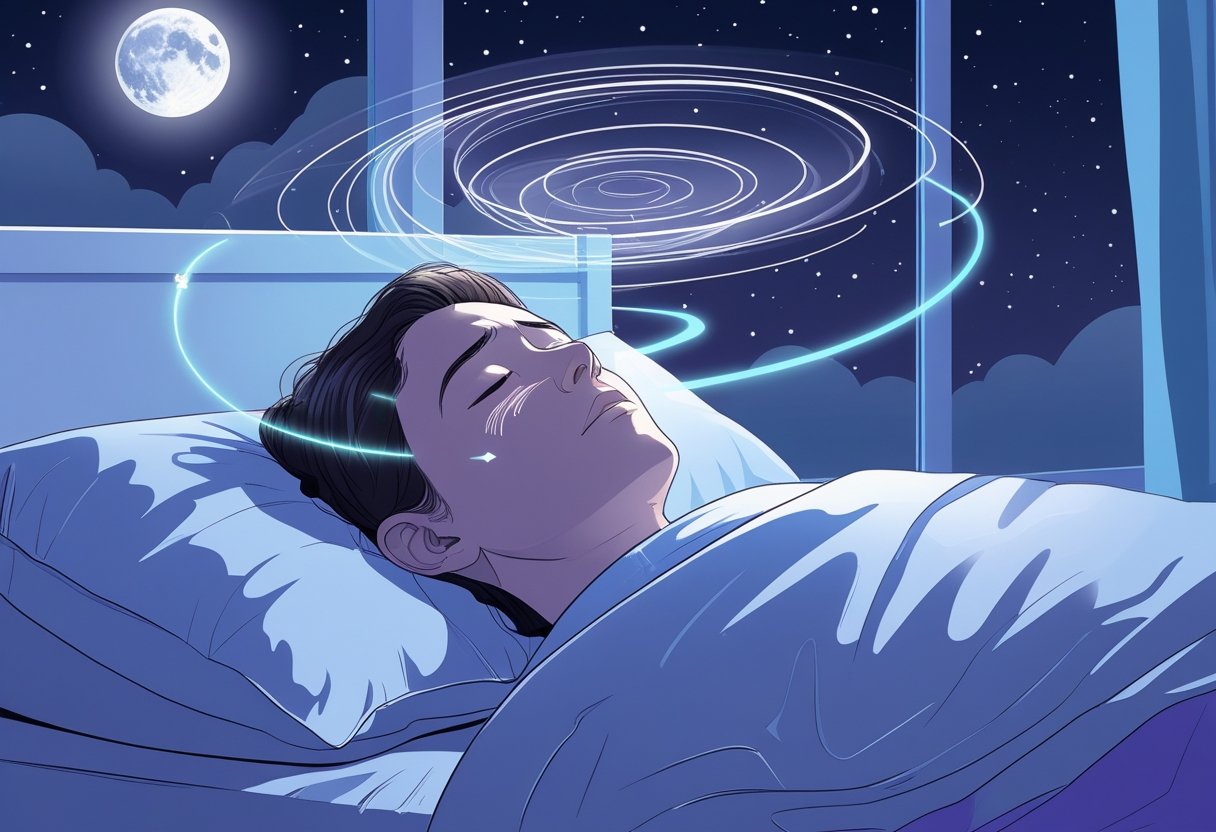
Best Sleep Positions for Managing Vertigo
The way you sleep can affect vertigo, especially if you have conditions like BPPV. Small changes in how you lie down or move in bed may ease dizziness and help you rest better.
Sleeping on Your Back: The Supine Position
Sleeping on your back is recommended for vertigo. This position keeps the head steady and lowers the chance of moving the calcium crystals inside the inner ear that trigger dizziness in BPPV. Keeping the head from moving reduces spinning sensations and avoids extra pressure on the ears. A supportive pillow that holds the head and neck in a neutral spot helps with balance. Try not to twist or tilt your head suddenly while falling asleep or waking up, since this can bring on dizziness.
Sleeping With Your Head Elevated
Raising the head about 30 to 45 degrees can help reduce vertigo. This position makes it harder for inner ear fluids or crystals to shift around during sleep. You can use extra pillows or an adjustable bed frame to create the right angle. Sleeping this way may also improve blood flow and ease nasal congestion, which sometimes worsens dizziness. Make sure the angle feels natural and doesn’t strain your neck. Keeping your head raised all night is more effective than switching between flat and elevated.
Side Sleeping: Left vs. Right
Side sleeping can be tricky for people with vertigo. If the problem is in one ear, lying on the other side usually feels better because it avoids putting pressure on the affected ear. Sleeping on the bad side can make crystals move and cause symptoms. Many people feel better with the affected ear facing upward. Pillows can help keep you from rolling onto the wrong side. Move slowly if you need to turn over so you don’t trigger dizziness.
To lessen dizziness, avoid quick head movements when lying down, turning, or getting up. Take your time and move carefully. Using pillows to support your back and neck can also make sleep more comfortable. It may help to avoid reading or watching TV in bed, since head motion and bright light can worsen symptoms. Many people feel best combining a slightly raised head position with side sleeping on the unaffected ear. Paying attention to which positions trigger dizziness will help you figure out what works best for you.
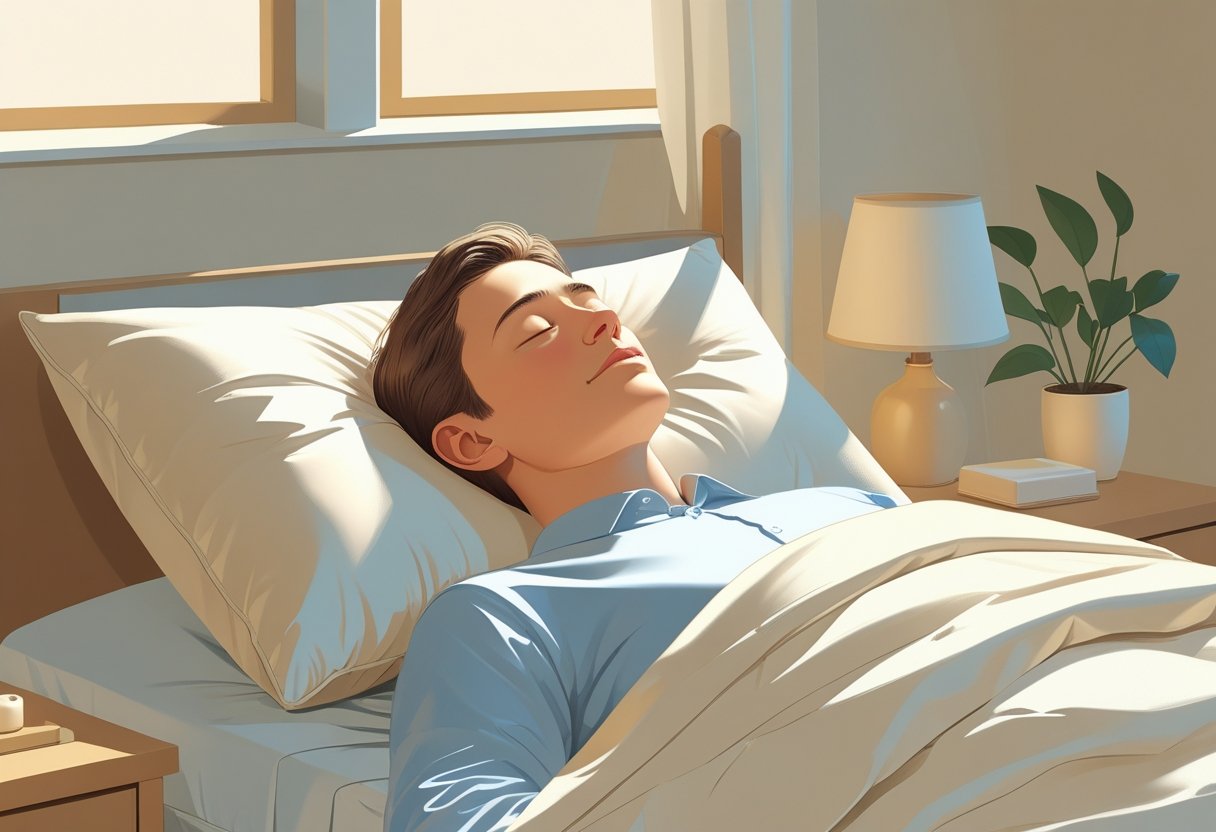
Nighttime Vertigo Prevention and Relief Strategies
Controlling vertigo at night means being careful with movement and knowing how to respond when symptoms appear. Simple changes in how you sleep and move can reduce dizziness and make rest more comfortable.
Avoiding Sudden Head Movements
Quick head turns or sudden shifts can trigger vertigo, especially when lying down. Move slowly and deliberately. Sit up first, then stand gradually when getting out of bed to avoid dizziness.
Using extra pillows to keep the head slightly raised can help balance and reduce inner ear fluid shifts. Sleeping on your back with your head elevated, or on the side that’s less affected, can ease symptoms. Try not to sleep flat or roll over too quickly, since that can cause sudden spinning sensations. Keeping your room safe and clutter-free is also important in case vertigo hits at night.
Soothing the Spins: What to Do During Attacks
During an attack, the best thing you can do is stay calm. The spinning often feels longer than it actually lasts. Rest quietly in a dark room to help the symptoms pass. Keep your eyes closed and breathe slowly instead of focusing on objects, since eye movement can make things worse.
Some people feel better with controlled breathing or light relaxation techniques to ease tension in the nervous system. If symptoms don’t fade, a guided at-home Epley maneuver may help reposition inner ear crystals causing the dizziness. Just be cautious and make sure you know how to do it properly. Avoid standing or walking quickly during an attack since that increases the risk of falling.
Should You Stay in Bed With Vertigo?
It can seem natural to stay in bed during an episode, but lying still for too long may sometimes make vertigo worse. Staying in one position can allow calcium crystals in the inner ear to shift, which can trigger more episodes of BPPV.
The key is balance. Remain still while symptoms are strong, but once they ease, gently change positions and try to elevate your head. Keeping a consistent sleep posture each night can lower the chance of sudden dizziness while lying down. If vertigo keeps coming back, it’s best to see a healthcare professional. They may recommend treatment or physical therapy exercises that target the cause and help prevent future attacks.
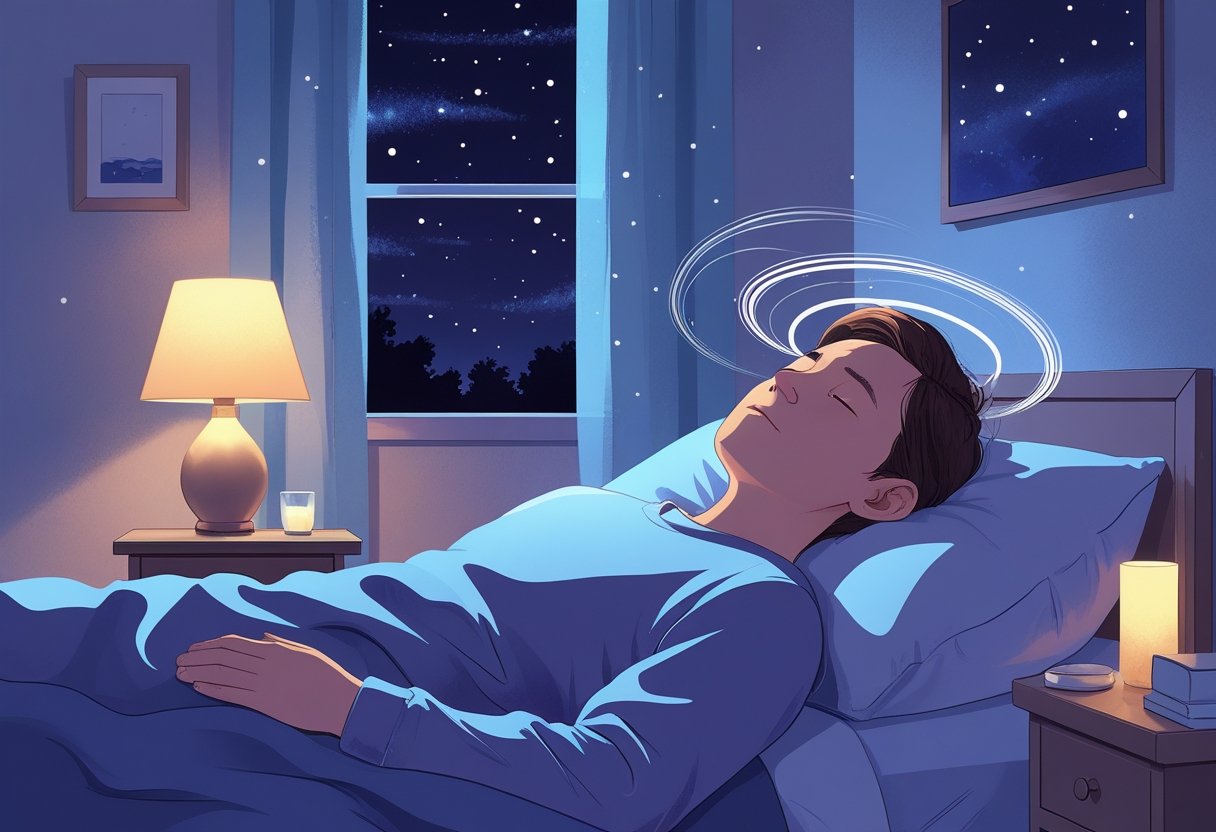
Optimizing Your Sleep Environment for Vertigo Relief
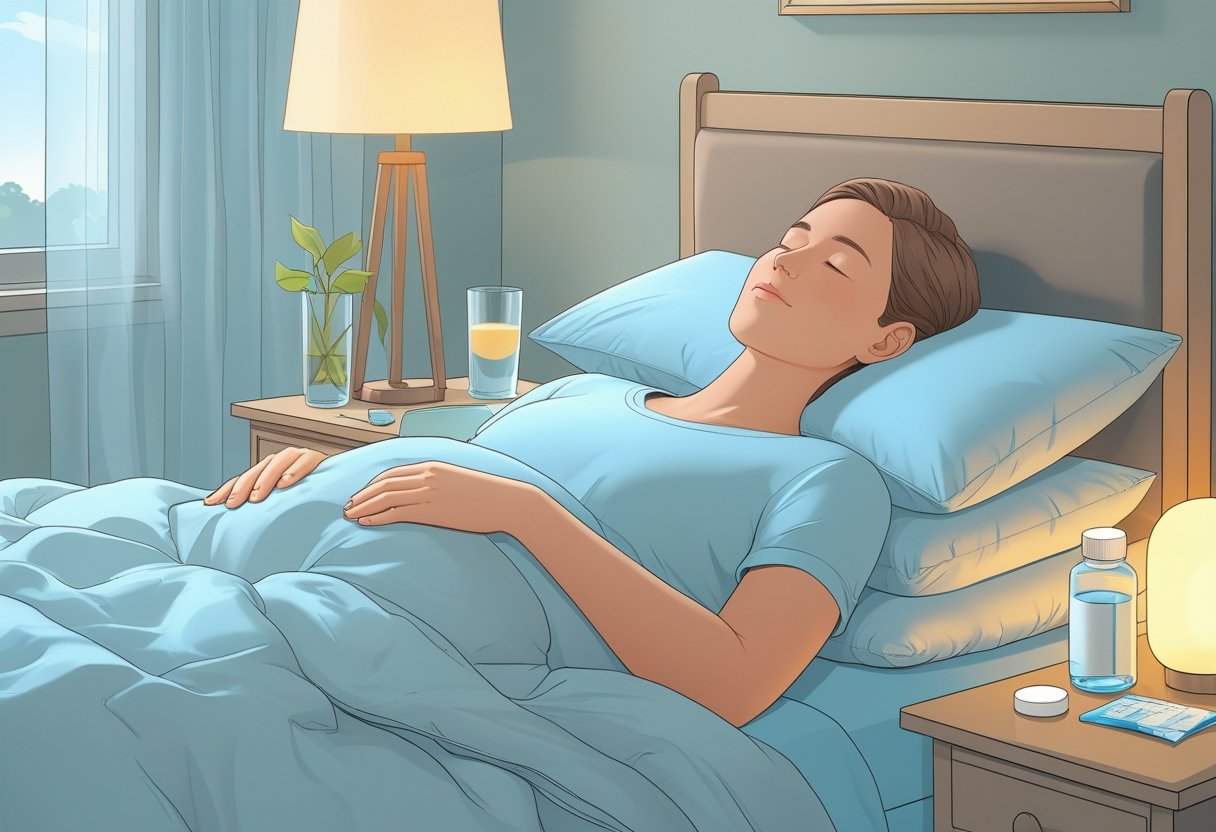
A calm and safe sleeping space can make a big difference for people with vertigo. Keeping the room dark, quiet, and set up with the right bedding helps prevent waking up dizzy. Simple changes in the environment also improve overall sleep and lower the risk of nighttime symptoms.
Reducing Light and Noise
Too much light can throw off your sleep cycle and make vertigo worse. Using blackout curtains or heavy drapes blocks outside light. It also helps to put screens away before bed since blue light can interfere with falling asleep.
Noise is another issue. Sudden sounds in the middle of the night can trigger dizziness or make waking up harder. Earplugs or a white noise machine can help by keeping sound steady and soothing. A quiet room supports longer, deeper sleep, which is important when dealing with vertigo.
Pillow and Mattress Choices
The way your head and neck are supported affects vertigo symptoms. A pillow that keeps your neck aligned with your spine is best. Memory foam or adjustable pillows usually work well since they mold to your shape and give steady support.
Sleeping with your head slightly raised can also ease pressure in the inner ear, which helps reduce dizziness. You can do this with extra pillows or an adjustable bed. As for the mattress, medium-firm is usually the safest choice. It supports the body evenly and avoids the strain that softer or uneven beds can cause.
Room Safety Measures
Vertigo increases the chance of falling, especially at night. Keeping the floor clear of clutter, cords, or rugs lowers this risk. Having a clear path around the bed makes it easier to move safely. Soft lighting also helps. A nightlight in the hallway or bathroom can guide you without the shock of a bright light. Motion-sensor lights are another option since they turn on only when needed.
It’s also smart to keep sturdy furniture, like a bedside table or chair, within reach. This way, if dizziness starts, there’s something stable to hold onto. These small adjustments make the bedroom safer and reduce the chance of accidents during a dizzy spell.
Additional Supportive Habits and Medical Treatments
Treating vertigo at night is not just about shifting positions in bed. Building healthier routines and using specific treatments can ease dizziness, calm the spinning feeling, and reduce sudden nighttime attacks. The goal is to help the body rest without constant interruptions from vertigo.
Relaxation and Breathing Exercises
Feeling anxious makes vertigo worse, especially when lying down. Relaxation can help calm both the body and the mind. Simple breathing, like slow inhales into the stomach with steady exhales, can slow the heart rate and release tension. Progressive muscle relaxation, where you tighten and then release muscle groups, also eases pressure that can trigger dizziness while resting.
These techniques can be done before sleep or during a dizzy spell. With practice, they make falling asleep easier and reduce vertigo upon waking. The key is consistency. Regular relaxation improves sleep quality and lowers the chance of waking up dizzy.
When to See a Specialist
If vertigo keeps happening during sleep or mornings are filled with dizziness, it’s time to see a doctor. Persistent symptoms can come from inner ear problems or even neurological issues. A doctor may suggest tests or refer you to specialists like otolaryngologists or neurologists. In many cases, vestibular rehabilitation therapy is used to strengthen balance and lessen attacks.
You should also seek medical help if symptoms worsen, such as severe headaches, hearing loss, or if vertigo leads to falls. Getting checked early means treatment can begin sooner, which usually brings better results.
Physical Maneuvers and Medications
Some physical techniques, like the Epley maneuver, can quickly ease vertigo. This method repositions tiny crystals in the inner ear that cause BPPV, a common source of dizziness with head movement. For many people, this brings fast relief during the night or when changing positions.
Doctors may also prescribe medicine to control symptoms that disrupt sleep. Antihistamines or benzodiazepines are often used, though usually for short periods because of side effects. Pairing these treatments with simple steps like staying hydrated and avoiding sudden head turns at night can make a real difference in sleep quality and stability.
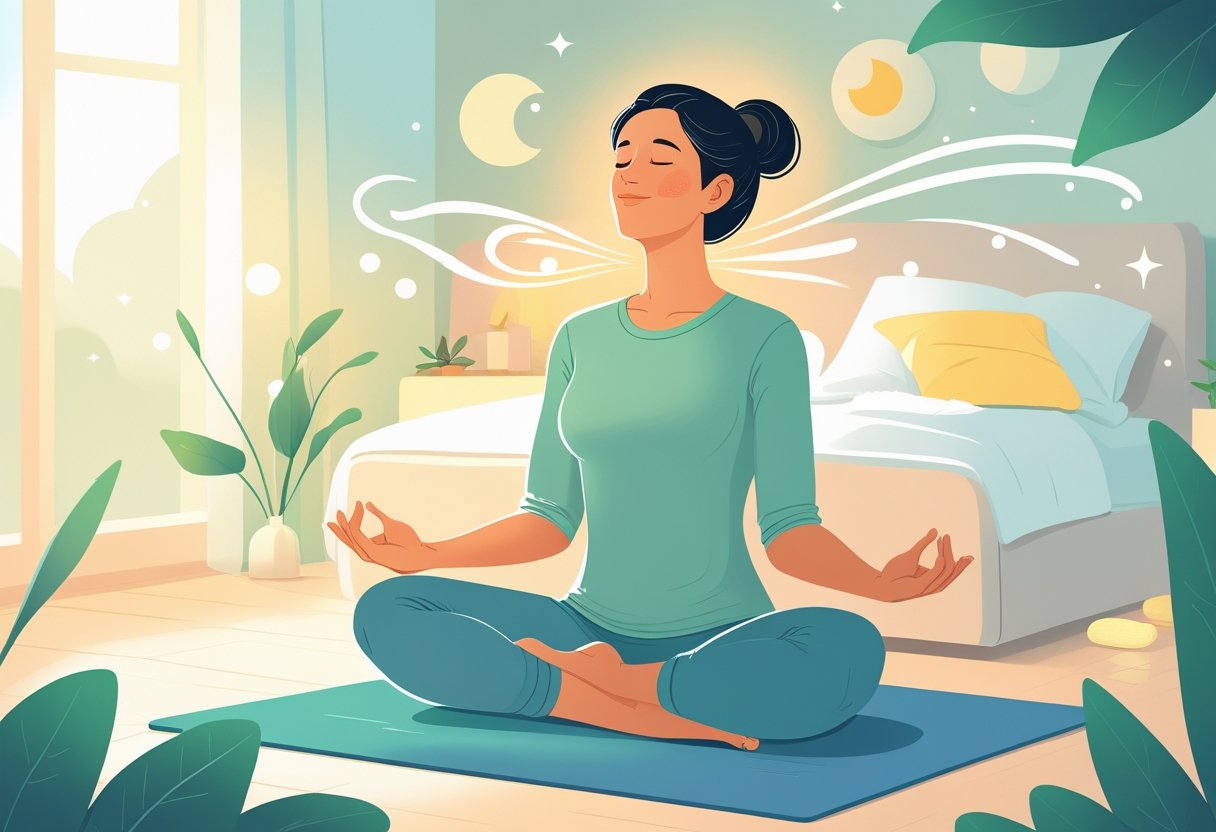
Choosing the Right Mattress to Improve Sleep for Vertigo
Sleep can feel harder when you live with vertigo. The wrong bed can make symptoms worse, while the right one can bring relief. A mattress that has the proper firmness keeps your body supported without letting you sink in too far. This helps prevent dizziness that often comes from bad posture or pressure points pressing into the body. A mattress that sags or feels too soft usually makes things worse. When the spine is not aligned, the body works harder to stay comfortable, and that extra strain can trigger vertigo. A steady and supportive surface can help, giving your body a position that feels stable through the night.
Another thing to think about is cooling. Waking up hot or sweating can increase discomfort, which is the last thing you want when you already struggle with balance issues. A bed with breathable materials helps keep air moving so the temperature stays even, making sleep less stressful on the body.
One mattress often recommended for this is the Brooklyn Bedding CopperFlex. It has a mix of support, cooling, and pressure relief, which are all important for people with vertigo. Its hybrid design holds the spine in the right position while also letting air flow through to avoid overheating. The Brooklyn Bedding CopperFlex also focuses on easing tension in sensitive areas like the shoulders and neck. This targeted support helps you settle into a position that feels natural and steady. For many people, that means fewer restless nights and a better chance of waking up without the spinning feeling that vertigo can bring.

Frequently Asked Questions
Finding the right sleeping position and pillow setup can make a big difference for people dealing with vertigo. Small changes often help reduce dizziness and make sleep more comfortable. Simple steps during an episode, like avoiding certain positions, may also keep symptoms from getting worse.

